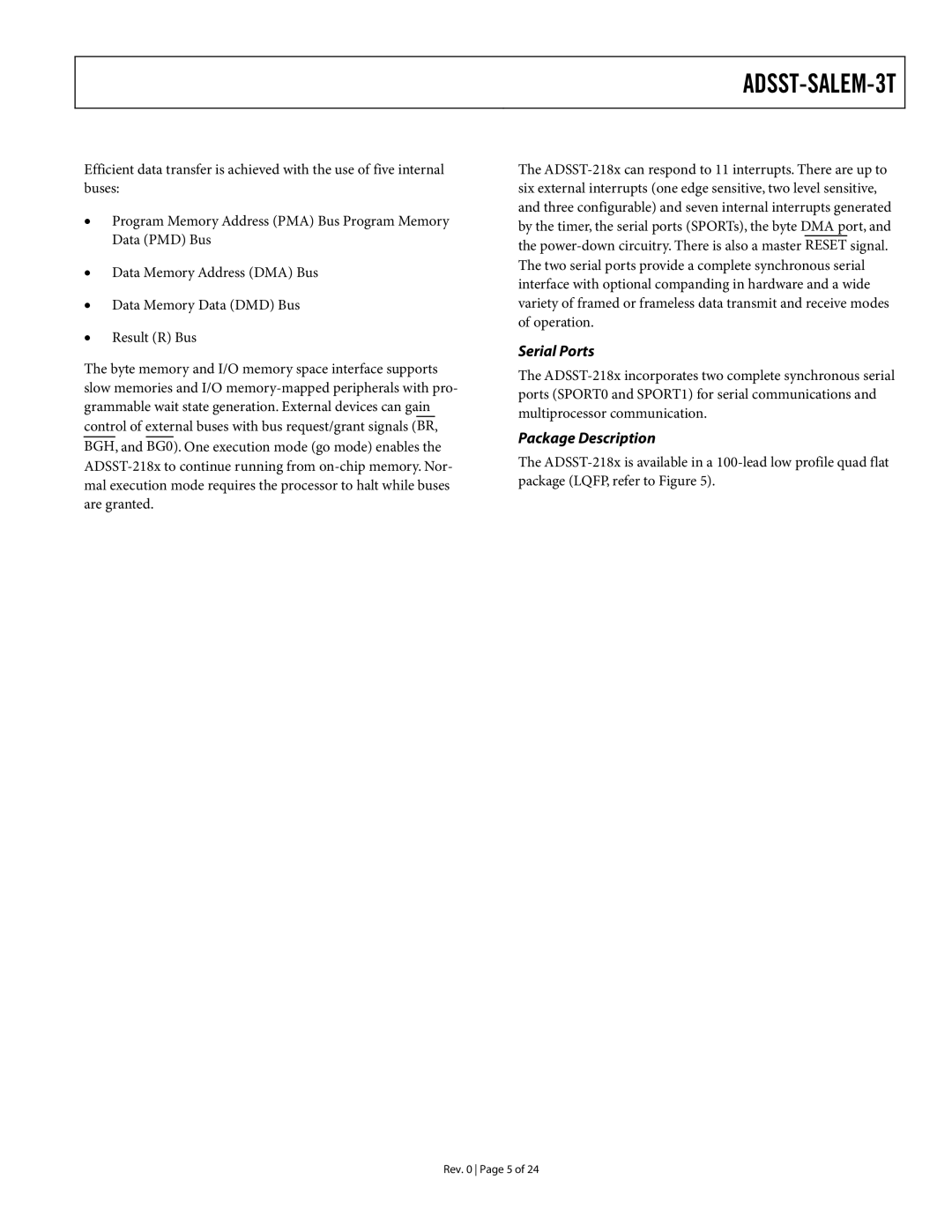
ADSST-SALEM-3T
Efficient data transfer is achieved with the use of five internal buses:
•Program Memory Address (PMA) Bus Program Memory Data (PMD) Bus
•Data Memory Address (DMA) Bus
•Data Memory Data (DMD) Bus
•Result (R) Bus
The byte memory and I/O memory space interface supports slow memories and I/O
The
Serial Ports
The
Package Description
The
Rev. 0 Page 5 of 24
